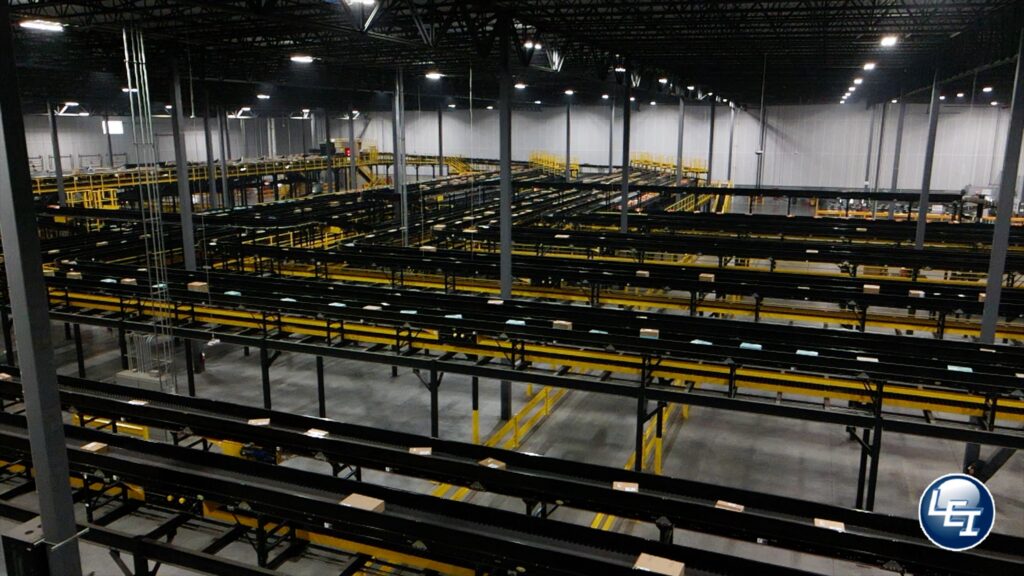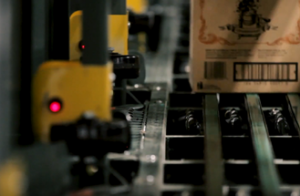Table of Contents
Conveyor systems are essential to modern industries, revolutionizing how materials are transported across manufacturing, warehousing, and distribution centers. This blog explores what conveyor systems are, their components, types, benefits, and the various ways they impact industries. If you’re considering a system, Lafayette Engineering is here to guide you through finding the best solution tailored to your needs.

Understanding Conveyor Systems
A conveyor system is a mechanical setup that moves materials from one location to another within a facility. Conveyor systems use a variety of mechanisms, such as belts, rollers, chains, or motorized components, to transport items efficiently across spaces. These systems help reduce manual labor, minimize product damage, and increase productivity by maintaining a consistent flow of materials.
Components of a Conveyor System
- Conveyor Belt: The belt is typically the main component of a conveyor system, providing a continuous surface for items to rest on as they move. Belts can be made from materials like rubber, fabric, metal, or plastic, depending on the intended application.
- Rollers and Wheels: Many conveyor systems use rollers or wheels that allow for smooth, low-friction movement. These components are essential in gravity-based conveyor systems and are often spaced strategically to support the weight and size of the products.
- Motor: Motors drive the movement of the conveyor. Depending on the design, some conveyors may use one or more motors to achieve different speeds or accommodate various load capacities.
- Pulleys: Pulleys help redirect the conveyor belt or chain and often assist with adjusting tension. They are crucial in belt-driven systems, helping maintain smooth operation and preventing wear on the belt.
- Frame: The frame or structure supports all other components of the conveyor system. It must be sturdy enough to hold the weight of the materials transported while allowing access for maintenance.
- Control System: Advanced conveyor systems include computerized control systems to monitor speed, adjust belt movement, and track items along the route.
Types of Conveyors
There are several types of conveyor systems, each designed for specific needs:
- Belt Conveyor Systems:
- The most commonly used type, ideal for transporting items over long distances.
- Great for handling a wide range of materials, including bulk, small, or irregularly shaped items.
- Roller Conveyor Systems:
- These conveyors use rollers set within the frame, ideal for heavy loads or irregularly shaped products.
- Rollers can be powered or gravity-driven, making them versatile for various applications.
- Chain Conveyor Systems:
- Suitable for transporting heavy materials, such as pallets, containers, and industrial products.
- Chains provide greater strength and durability, ideal for high-torque applications.
- Slat Conveyors:
- Comprised of slats (usually metal) attached to chains.
- Commonly used in heavy-duty industrial applications and can carry loads through complex routes.
- Magnetic Conveyor Systems:
- These utilize magnets under a conveyor belt or track to move magnetic materials like metal sheets.
- Often used in the automotive and manufacturing industries for handling metal parts.
- Vertical Conveyors:
- These systems transport items vertically from one level to another.
- Vertical conveyors save floor space and are useful for facilities with limited space but significant height.
- Overhead Conveyor Systems:
- Often used in assembly lines or paint shops, these conveyors hang from the ceiling.
- Effective for freeing up floor space and improving workflow in factories.
- Pneumatic Conveyors:
- These systems use pressurized air to move items or materials through tubes.
- Ideal for transporting small or granular materials like grains or powders.
Benefits
The use of these systems brings a range of advantages to industries, from increased productivity to improved safety:
- Enhanced Efficiency:
- Conveyorss can operate continuously, reducing downtime and allowing for faster movement of materials. This leads to increased productivity and more streamlined operations.
- Reduced Manual Labor:
- With automation, conveyor systems significantly cut down the need for manual material handling, leading to lower labor costs and less physical strain on employees.
- Improved Safety:
- Conveyors help reduce the risk of workplace injuries by minimizing the need for employees to manually carry heavy or awkward items. Automated conveyors also allow employees to work from a safer distance.
- Consistent Quality Control:
- Conveyor systems support a smooth, steady flow of products, leading to fewer damages and ensuring uniform product quality across the manufacturing or assembly process.
- Scalability:
- As businesses grow, conveyor systems can often be scaled up to accommodate higher volumes. This adaptability is valuable for growing businesses that need to expand production capacity over time.
- Space Optimization:
- Conveyor systems can be designed to fit the specific layout of a facility, often making use of vertical or overhead space to save valuable floor area.
Applications
Conveyor systems are used across various industries, from manufacturing to warehousing, and even retail:
- Manufacturing:
- In manufacturing facilities, conveyors transport raw materials, assemble parts, and handle finished products. They help streamline production lines and minimize handling time.
- Warehousing and Distribution:
- Warehouses use conveyors to move goods from receiving areas to storage, picking areas, and shipping. This automation helps reduce order processing time and increases order accuracy.
- Mining and Heavy Industry:
- Conveyor systems are essential for transporting large volumes of materials, such as coal, rocks, or minerals, over long distances. These conveyors must withstand extreme conditions and heavy loads.
- Food and Beverage:
- In the food industry, conveyors are used to handle ingredients, move products through cooking or cooling processes, and sort items for packaging. They are designed with materials that meet health and safety standards.
- Automotive:
- Automotive plants use conveyor systems to transport car parts and assemblies throughout production lines. Overhead conveyors are especially useful for freeing up workspace on the factory floor.
Choosing the Right System
Selecting the right system depends on various factors, such as the type of materials to be transported, the facility’s layout, and the level of automation needed. Here are some considerations to keep in mind:
- Material Type: Consider the size, weight, and shape of the materials you plan to move. For example, heavy-duty chain conveyors are ideal for bulky items, while pneumatic conveyors are better for lightweight powders or grains.
- Flow Requirements: Determine the speed and direction of movement needed to optimize workflow. Automated control systems can help manage flow and reduce bottlenecks.
- Space Constraints: Assess the layout of your facility and choose conveyors that maximize floor space. Overhead or vertical conveyors may be ideal for facilities with limited floor area but ample height.
- Maintenance Needs: Consider the ease of maintenance. Systems with accessible components and reliable control systems tend to have less downtime and longer lifespans.
Conclusion
Conveyor systems are integral to efficient material handling across various industries, from manufacturing to warehousing. By reducing manual labor, increasing productivity, and improving safety, systems have become indispensable. Choosing the right system depends on your unique requirements, and working with experts like Lafayette Engineering ensures you find a solution tailored to your operational needs.
If you’re ready to take the next step in automating your facility’s material handling, contact Lafayette Engineering to discover the best conveyor systems for your business.



